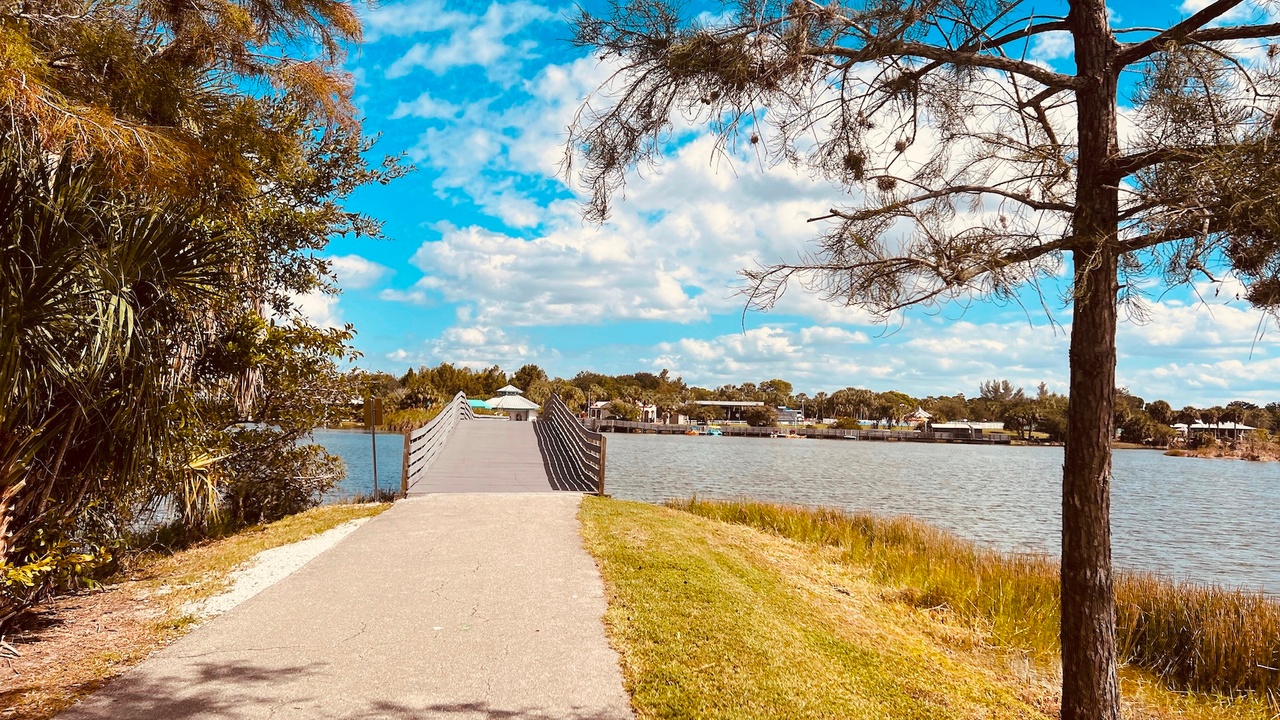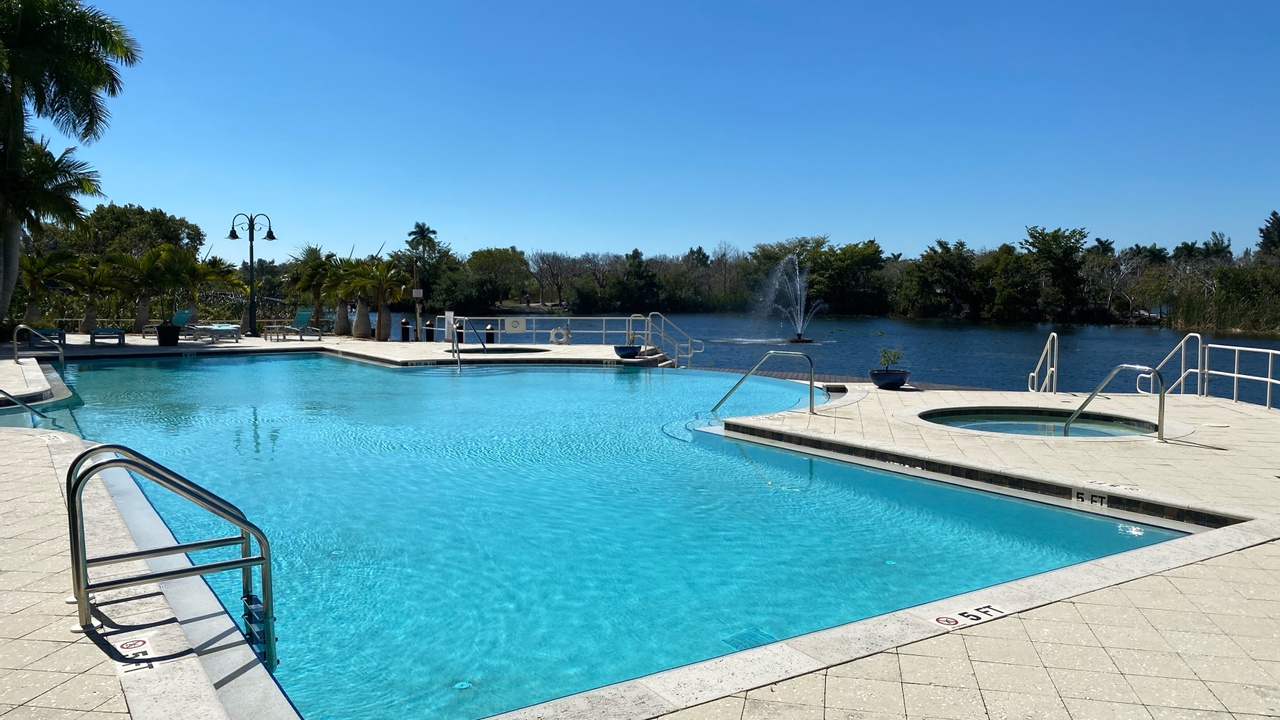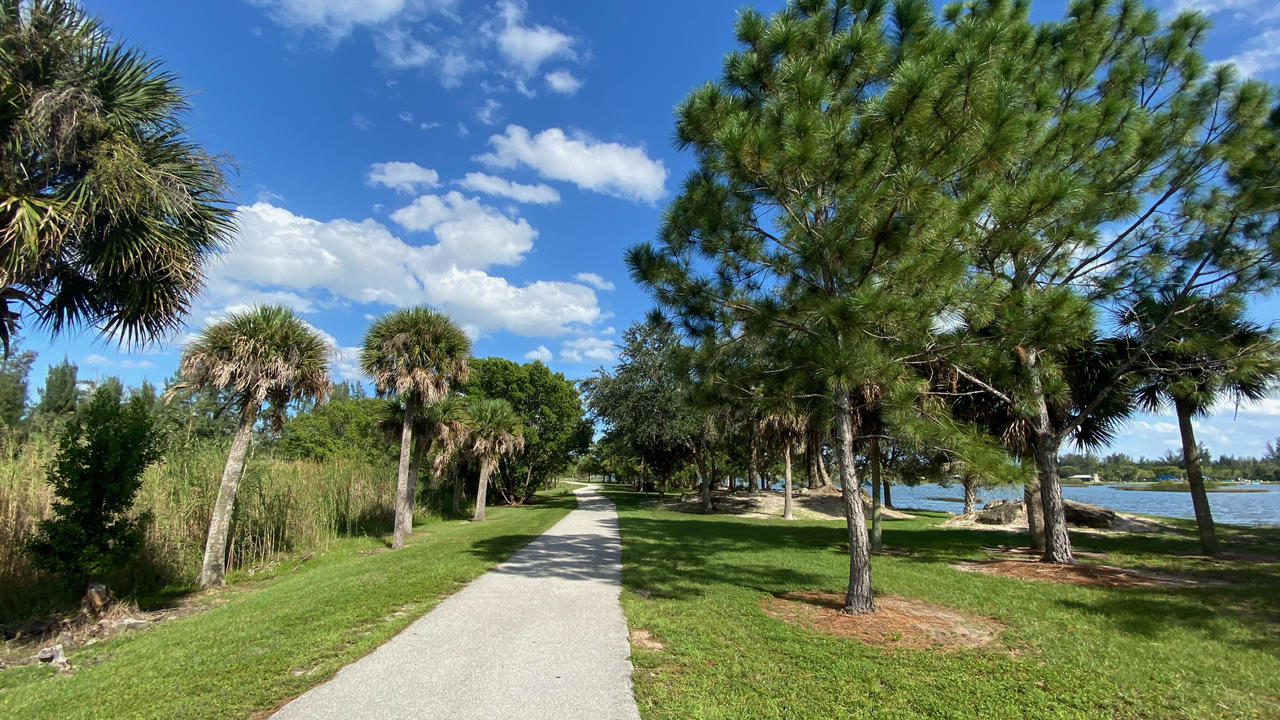Aerobic Exercise and Why It Matters

A brisk walk in the park on a beautiful Florida fall day is an awesome aerobic exercise! Photo courtesy of Charly Caldwell II
‘Aerobic’ exercise refers to exercise that requires an uptake and consumption of substantially more oxygen than at rest.
It involves repeated movements of the large muscles of your body for a minimum of 20 minutes.
Examples of aerobic exercise include:
- Brisk walking,
- Jogging,
- Swimming
- Cycling
- Dancing
- Ice Skating
- Kayaking
- Roller-blading
Because you need more oxygen to do aerobic exercise, you breathe more rapidly and more deeply to get extra oxygen into your lungs.
Your heart also beats faster to deliver more oxygen-carrying blood from your lungs to your muscles.
How fast your heart beats and how rapidly you breathe will depend on how intense the exercise is.
For general health and fitness benefits, such as reducing your risk of heart disease, diabetes, cancers and improving your stamina, it is recommended that you do some form of moderate intens...
Can There Be Too Much of a Good Thing?

Celebrating life with great people, after a gorgeous evening run. Photo Courtesy of Charly Caldwell II
There is constant information in the media regarding inactivity and recommended activity levels.
The CDC and health.gov both post the recommended guidelines for youth ages 7-17 as:
“an accumulation of at least 1 hour a day of moderate to vigorous physical activity”.
As I am sure you know, inactivity has a negative impact on health in terms of obesity, diabetes, heart and cardiovascular function.
Exercise and sport, however, has shown to have a positive impact on these health factors, as well as bone density and structure, social interactions, sleep and mood improvement.
I want to focus however, on the other end of the spectrum, as physicians and therapists are seeing more young patients with issues due to over-activity related to exercise and sports.
To be fair, this is commonly due to a combination of factors, such as growth spurts, an accumulation of school or regional sports, ...
Hydrotherapy is Much More Than Water Aerobics

Enjoy the cool water of a pool, while you exercise, even on the hottest of Florida summer days... 🏝🏖❤️ Photo courtesy of Charly Caldwell II
I recently found myself in a conversation with someone who believed his wife’s hydrotherapy was the equivalent of a water aerobics class.
I quickly set him straight by pointing out:
- hydrotherapy offers so many benefits to both seasoned athletes and recreational warriors,
- water aerobics or water exercise classes are an excellent form of exercise for both men and women of all ages ...
and he should give it a try.
Hydrotherapy is one of the most effective and therapeutic ways to exercise (and rehabilitate) in a calm and relaxing environment.
The water’s buoyancy decreases the load or impact which passes through weight-bearing joints by up to 90% allowing for more activities and movement with less stress and load on the joints.
Exercising in water can be just as intense as exercising on land but without the physical impact on your body.
Brin...
Exercise and Mid-Life - Use It to Your Advantage

Aim for 10,000 steps a day, make it fun - like walking the beautiful beach in Naples, Florida at sunset! Photo courtesy of Charly Caldwell II
It’s easy to assume that all the changes happening in your body are due to aging.
But, some are not inevitable.
There are measures you can take to ensure you’re fit in your 50’s and well beyond.
First, build some muscle.
Loss of muscle mass starts around age 30 and by the time the average person reaches 70, they could have lost 25 per cent of their muscle mass.
Scientists know that not all loss of muscle mass as people age (known as sarcopenia) is due to aging, some is due to inactivity and disuse.
The good news is that older adults who strength train regularly can regain a substantial amount of this muscle loss, function and strength.
Strong muscles are not just beneficial for carrying groceries, they serve many other functions as well.
Lean muscle burn 10 times more calories than fat tissue, even when you’re at rest.
Muscles also help ...
Good Exercise Habits - Build on the Basics

Enjoying a beautiful sunset in Lakes Park, Fort Myers, Florida, after a 2 mile run on a beautiful April Florida evening. Photo courtesy of Charly Caldwell II.
Undeniably, we have had to deal with a lot of changes over the last few year.
Looking forward, it is likely that these changes will resonate for weeks, months or even years, changing the way we operate.
Navigating the lifestyle changes can be difficult and disruptive and keeping up with good habits can fall to the wayside.
Many may even have given up on the idea of trying to exercise at home entirely due to lack of equipment, space, time or motivation.
Some experienced the “quarantine 15”.
Whatever your status, it is especially important during times like these to look after our health and well-being and to consider the role of physical activity in managing various health risks.
Exercise is a mainstay in preventative management of cardiovascular disease, diabetes, and obesity.
Physical activity is also essential for the dev...
Seek a Qualified Professional for Quality Information

Take the extra time to reflect on what's real - do the research & learn. Enjoy & reflect on this beautiful February sunset on Naples Beach. Photo Courtesy of Charly Caldwell II
With so much information available on the Internet and social media, it can be hard to decipher what's real from what’s … not.
Qualified personal trainers hold professional degrees in fitness-related fields, including exercise science and kinesiology, plus years of experience training clients to reach their fitness goals.
When you’re seeking answers, seek out a professional. Don’t be fooled by misinformation.
Get quality information from a qualified professional so you may realize your goals.
MYTH #1: You need to be in the 'fat-burning zone' to burn fat.
You might have heard about the 'fat burning zone' and how you need to run for long durations in this zone to burn fat.
Though there is truth to this, the same desired outcome can be achieved through a style of training called high-intensity interval trai...
The Humble Resistance Band, Unassuming Yet So Versatile

Example resistance bands, easily found on Amazon or anywhere workout equipment can be purchased.
Whether you're rehabilitating a specific muscle group or just want to get more out of your workout, don't overlook the humble resistance band.
Resistance bands are an extremely common piece of equipment that you can find in most gyms, but many people are unsure of what to do with them.
Just like the weights around the gym, resistance bands come in all different sizes and intensities to suit you and your training.
Resistance bands are great for people in all stages of their training needs.
They can be great for beginners learning how to move, people recovering from injuries, elite athletes needing help engaging certain muscles or simply people wanting an extra burn.
Read on to learn some of the top benefits and practical applications of resistance bands.
Resistance Bands for Rehabilitation
A lot of clients still in the rehabilitation phase of their training can benefit from using resi...
Exercise and the Science of Metabolism

Join us for a beautiful fall morning run in gorgeous Fort Myers, Florida... 🌴 🏖 ❤️
Regardless the kind of exercise or activity you do, you will always require some sort of energy to complete the task at hand.
Without our metabolic processes’ we would not be able to convert the food we eat into usable fuel.
Around 60% of the energy we get from our food is used for keeping the body alive and its organs working correctly. The other 40% can be used for walking, exercise and other daily activities.
If the energy does not get used, a big part of it will be stored in the body as fat.
Extensive dieting reduces our metabolic rate, cuts down your energy levels and is not the best way to lose weight.
Exercise can help to increase your resting metabolic rate, meaning you’ll start to burn more calories even while your body is in its resting mode.
High intensity exercise or vigorous resistance training can cause you to burn calories for hours after the training has been completed.
This is du...
Delayed muscle soreness or injury? How do you know?

A beautiful autumn day in Fort Myers, Florida, perfect walking or running weather! Join the Geared Up family on our next run, find out how here. ❤️
For a lot of us, pain in the body will come and go, like a headache.
You may have pain for an hour or maybe even a day, but often it will simply go away and you’ll forget about it.
There are many factors and mechanisms that cause pain in the body, and sometimes you may feel it’s not bad enough to do anything about.
The best tip I can give you is you should do something about our pain before it becomes problematic.
But how do you know when?
Delayed onset muscle soreness (D.O.M.S)
As you’ve probably experienced, after training, you can develop delayed onset muscle soreness (D.O.M.S).
This pain and stiffness can be felt in the muscle for between 24 to 72 hours, days after strenuous or unaccustomed exercise.
It is caused by damage to the muscle during the eccentric (lengthening) part of the contraction and the soreness comes when the mu...
Building a Positive Mindset - Breaking Down Barriers, Exercise Benefits Everyone

A beautiful run on this early spring day, in Lakes Park in Fort Myers. Photo courtesy of Charly Caldwell II
It is universally accepted that regular physical activity not only helps us stray fit and healthy, it can also increase self-esteem, develop social skills and improve mental health and general well-being.
However, most of us experience those benefits on a homogeneous level.
It wasn’t until I had the honor of working with an autistic adult that I began to appreciate the barriers and limitations people with autism face.
Research shows that people with autism are less likely than to participate in sport or physical activity due to factors related to the condition, including heightened fear and anxiety in social situations, difficulty understanding body language and sensory challenges.
If someone on the autism spectrum responds negatively to a sporting or physical activity it can be perceived as a behavioral issue when this is in fact, not the case.
What one person may perceiv...

